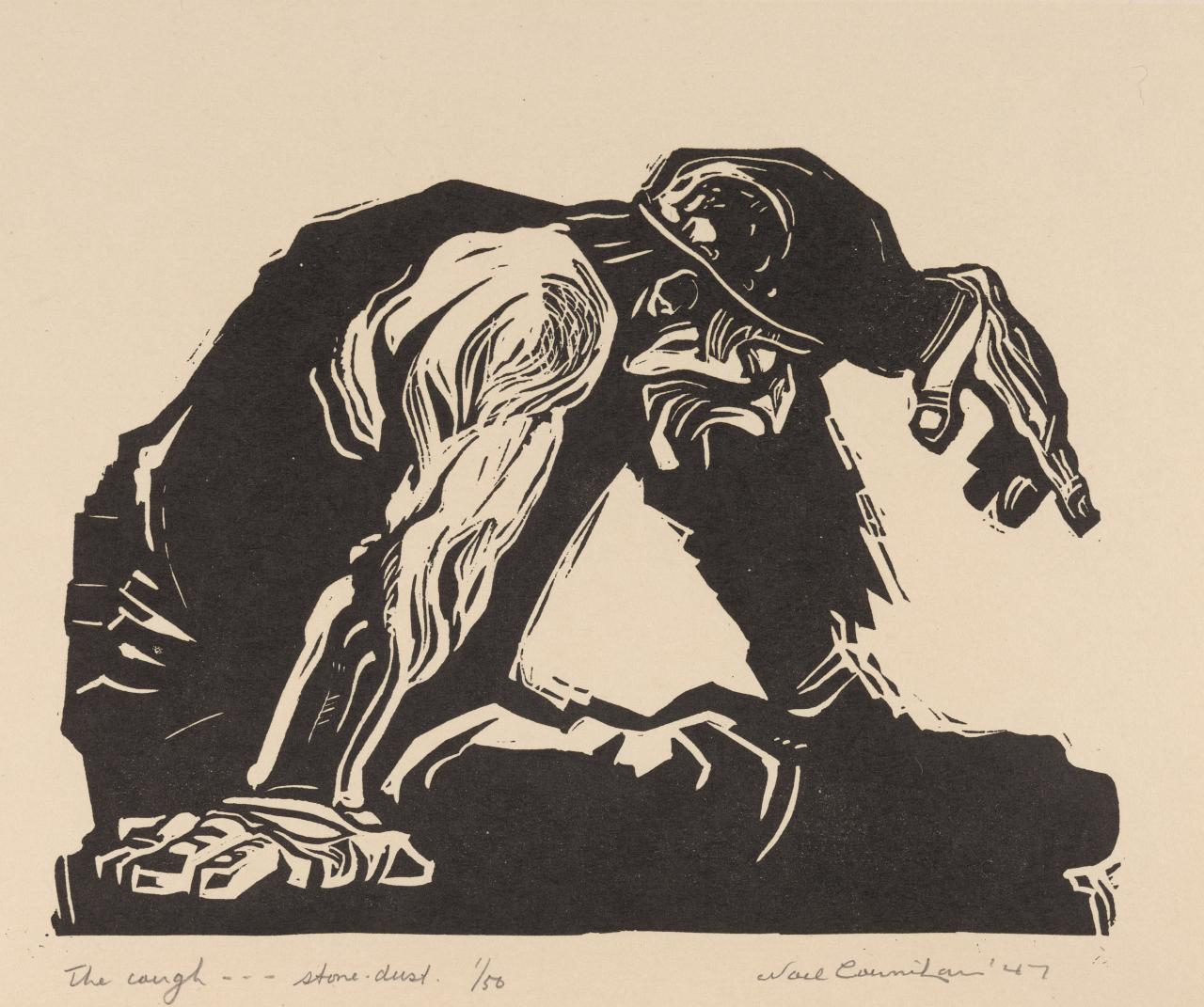
Noel Counihan
Noel Counihan was born in 1913 in Albert Park, then a working-class suburb of Melbourne.
In 1931 Counihan became a member of the Communist Party of Australia. He helped found the Workers Art Guild, and began printmaking, producing linocuts and lithographs for Communist magazine covers and pamphlets as well as designing banners. He saw firsthand the effects of the Great Depression on the unemployed.
During the Great Depression Counihan combined his art with his politics and created proto-performance art when he caged himself as part of the ‘free speech’ fights in Sydney Road in Melbourne. He was arrested once the police were finally able to break into the cage.
From 1934 Counihan worked as a caricaturist for various publications, including The Bulletin.
He spent extended periods in hospital with tuberculosis during the Second World War. He did not fight in that war.
In his art Counihan developed a personal style based on the social realist approach, producing images of workers and their working lives.
In 1940, Noel married Pat Edwards. They had two children, Terry and Mick.
During the 1940s Counihan entered into a famous debate with Albert Tucker about the nature of Marxist art. These letters were published in Max Harris’ Angry Penguins journal.
Counihan travelled widely on a number of occasions and visited Europe in 1949 as a delegate to the World Congress of Peace. On that trip he saw the Warsaw Ghetto and some of the Soviet Communist countries.
Counihan was close friends with the writer Judah Waten, and the painter Josl Bergner.
Counihan died in Melbourne aged 73.
The Counihan Gallery, managed by City of Moreland Council, is named in his honour.
The art of Noel Counihan can be found in most of the major Australian public galleries. Visit the website of your state or regional gallery to find out which pictures are in their collection.